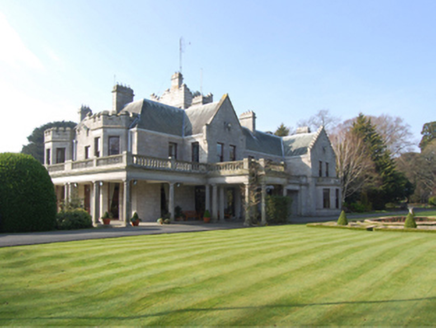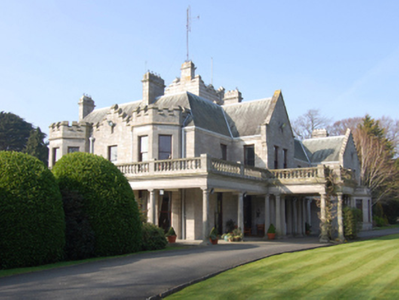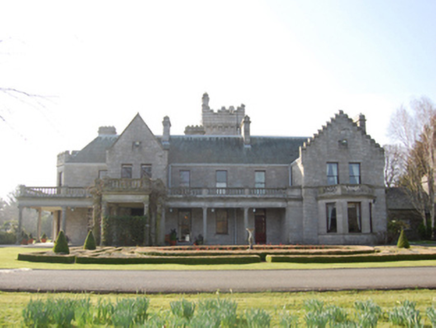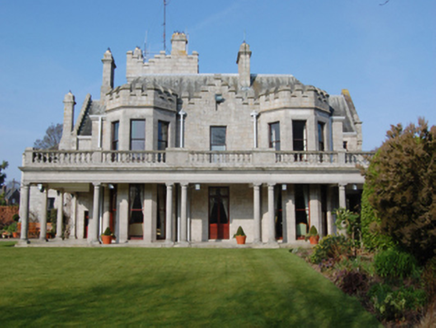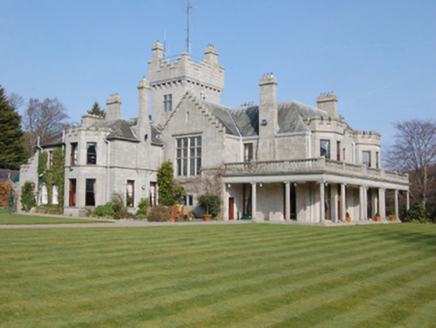Survey Data
Reg No
60230001
Rating
National
Categories of Special Interest
Architectural, Artistic, Historical, Social
Original Use
Country house
In Use As
Embassy
Date
1855 - 1865
Coordinates
319726, 225449
Date Recorded
27/02/2013
Date Updated
--/--/--
Description
Detached six-bay (three-bay deep) two-storey country house, designed 1859; built 1859-61; occupied 1861, on an L-shaped plan with single-bay two-storey gabled advanced (east) or projecting (west) end bays. Occupied, 1901. Sold, 1904. "Improved", 1904-5, producing present composition. Occupied, 1911. Sold, 1953, to accommodate alternative use. Set in landscaped grounds.
Appraisal
A country house erected for George Gresson (1802-76) to a design by Benjamin Woodward (1815-61) of Upper Merrion Street, Dublin, representing an important component of the mid nineteenth-century domestic built heritage of south County Dublin with the architectural value of the composition, '[originally] a plain house [and] probably never Gothic but Tudor in the manner of W.V. [William Vitruvius] Morrison's Ballygiblin of the 1830s' (O'Dwyer 1997, 457-8), confirmed by such attributes as the compact, albeit multi-faceted plan form; the construction in a silver-grey granite demonstrating good quality workmanship; the diminishing in scale of the openings on each floor producing a graduated visual impression with the principal "apartments" defined by polygonal bay windows; and the crow stepped battlements embellishing the roofline: meanwhile, aspects of the composition clearly illustrate the continued development or "improvement" of the country house to a design by James Franklin Fuller (1835-1924) of Great Brunswick Street [Pearse Street], Dublin (Irish Builder and Engineer 10th July 1909, 424), 'so that it became a mixture of Baronial and American Colonial with a veranda running around it and an Irish-battlemented tower' (Bence-Jones 1978, 136-7). Having been well maintained, the elementary form and massing survive intact together with substantial quantities of the original fabric, both to the exterior and to the interior where contemporary joinery; heraldic stained glass attributed to Edward Frampton (1845-1928) of London (Williams 1994, 183); robust chimneypieces; and decorative plasterwork enrichments, all highlight the artistic potential of the composition. Furthermore, adjoining outbuildings (extant 1908); an adjacent glasshouse (see 60230002); a walled garden (see 60230003); a nearby gate lodge (see 60230004); and an eye-catching gateway (see 60230005), all continue to contribute positively to the group and setting values of a self-contained estate having historic connections with the Right Honourable Justice James Murphy PC (1826-1901), 'one of His Majesty's Judges late of Glencairn Kilgobbin County Dublin' (Calendars of Wills and Administrations 1902, 304; cf. 60260011); and Richard Welsted "The Boss" Croker (1841-1922).
